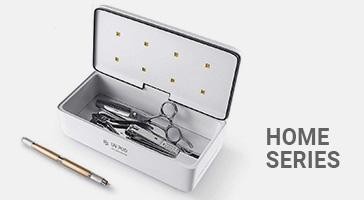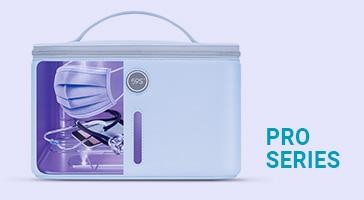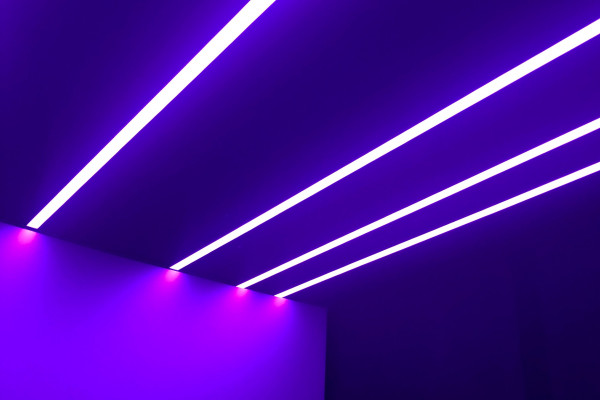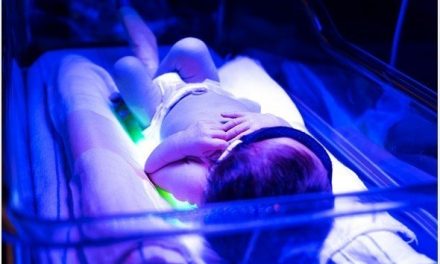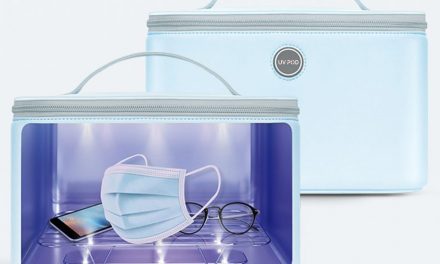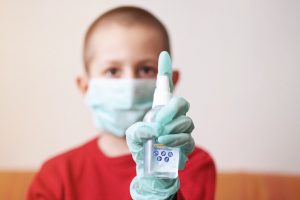
The pandemic changed our lives in an instant. Suddenly, everyone is intently focused on disinfecting, social distancing, and wearing various protective gears. People have been preparing for the next wave come winter by stocking up on cleaning products and necessities that they deem sufficient to last them another couple of weeks in lockdown. By now, you may have already heard of an interesting fact: that UV light is one of the easiest and most effective ways to kill germ and bacteria.
It has already been proven that UV light does wonder when it comes to eliminating microbes. In the past, it was recognized to be what helped slow and eventually cease the spread of the bacteria that causes tuberculosis. How about its capability of killing COVID-19 causing germs, you ask? Well, to be honest, there’s not enough study on it to be a hundred percent sure yet. So, to find out more about UV light – what is it, its capabilities, and limitations, keep on reading!
So, what exactly is UV light?

According to Dr. Jim Malley, a professor of civil and environmental engineering at the New Hampshire University, UV light is a form of radiation that cannot be seen by the naked eye. It is an invisible part of the “electromagnetic spectrum.” One of the most significant UV rays contributors, the sun, has three different rays: UVA, UVB, and UBC. Have you heard of any of these three? Well, UVA and UVB are the ones to blame for your sunburns and, to some, skin cancer.
However, UVC rays never reach the Earth’s surface because the ozone layer is blocking them. The UVC that you have known of is artificial. It doesn’t make it less impressive, though; UVC, with the shortest wavelength and highest energy of all the UV radiation, is famous for air, water, and surfaces disinfectant. So on the topic of UV light’s ability to sanitize, the spotlight is on UVC, according to Malley. Why? On the occasion that UVC is released at specific wavelengths and for certain periods, UVC light is capable of damaging the genetic components DNA or RNA in germs and bacteria, preventing their ability to multiply and, in turn, motivating their natural cellular functions to cease, lectures Chris Olson, a microbiologist and Infection Prevention and Emergency Preparedness at UC Health Highlands Ranch Hospital program manager.
It is important to remember though, that albeit UVC rays from unnatural resources have risks including, but not limited to, burns of the eye and skin – just like with UVA and UVB rays – the FDA maintains that these injuries “more often than not do not last for more than a week” and the window for skin cancer to develop is shallow.
However, for UV light sanitation to be successful, multiple crucial factors have to be under control. One, the rays have to be at the perfect wavelength with the target virus. Usually, this depends on the individual organism; somewhere around 200-300 nm is thought to be “germicidal,” with the most effective at 260nm, as per Malley. They have to be the appropriate dosage – UV intensity magnified by the correct total time of contact, he said. “The proper amount of UV typically required is pervasive, anywhere around 2 and 200 mK/cm2, varying upon individual states, the items being sanitized, and the aimed level of sanitation.
It also matters that there should be nothing hindering the UVC light from getting to the object, according to Malley. “We think of UV sanitation is a line-of-sight technology, in any case, that there is something that is obstructing the UV light, such as stains, dirt, or any one thing that may cast a shadow, then the space that is shaded will not be sanitized.”
If it’s coming to be a little complicated, it is because it actually is: “UV sanitation is not straightforward; it’s not universal,” pointed Malley. That is just a single reason why scientists are still uncertain about the effectiveness of UVC light instead of coronavirus.
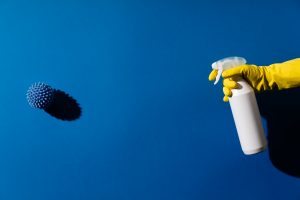
UVC is highly effective against SARS and MERS, both of which are near similar to Covid-19. Multiple studies, along with reports from the FDA, discovered that UVC light possibly has the same effect against Covid-19, but many are still pending for peer-review. Also, there’s finite published information about the wavelength, dosage, and extent of UVC radiation needed to kill the Covid-19 virus, as per the FDA. This means additional research is required before we can formally – and harmlessly – recognize UVC light as a credible method to fight coronavirus.
With that information, UV lamps persist in being extensively used to disinfection within, for example, healthcare institutions. For what reason? A study has initiated that UVC rays can cut the transmission of known superbugs (like staph) by at least 30 percent. Many (if not all) hospitals utilize a robot the same size of a personal refrigerator that emits UVC to disinfect entire rooms, according to Chris Barty, a University of California, Irvine, distinguished professor of physics and physicist. The moment people leave a room, the robot will start working by radiating UV rays, adjusting to the size and other variables (shadows, nooks, and cranny) of the room to administrate the light for as long as the machine assumes necessary. Anywhere between 4-5 minutes for small spaces like restrooms, and 15-20 minutes for bigger rooms, said Tru-D, a machine like this robot.
Some healthcare institutions also utilize UVC cabinets with doors to sanitize smaller objects like tablets, phones, and medical gadgets. Others have since instituted UVC devices in their air ducts to sterilize recirculated air, according to Olson – and, given that Covid-19 circulates through aerosols, this arrangement is understandable. But these medical-grade gadgets are not for personal usage, aside from being exceptionally costly, costing $100k and up, but they also demand extensive training for successful operation, said Malley.
However, if you’ve allocated enough time studying and reading about Covid-19 disinfectants, you should know that personal UV gizmos have started becoming available in the market right now, all of which professing disinfecting abilities in the comfort of your own abode.
Do you need to buy UV light sanitizing gadgets?
“Many personal UV light sanitizing gadgets that have been scrutinized and examined [through our study at the University of New Hampshire] have not achieved the degree of disinfection that they declare in their advertisements,” added Malley. “Most lack power, with poor design, and claim to eradicate 99% of bacteria, but only gets 50% kill of bacteria upon testing.”
Barty seconds this; he said that the gadgets do, in fact, release UVC, but “nowhere near the right dosage to be able to do anything in the duration they claimed.” Keep in mind, for UV light to be able to kill bacteria, it has to be shining for a specific duration and to a particular wavelength – also, if we’re talking about defeating Covid-19, both of these measurements are still uncertain as per FDA.
While researchers are still uncertain of the effectiveness of UV sterilization gadgets against Covid-19, especially the personal ones, we cannot deny that before the pandemic, UVC light was portrayed (and successfully utilized) to eradicate pathogens. So, if you still want to try gadgets like UV lamps, there’s a possibility that it’ll somehow lessen the spread of other bacteria that may be residing in your home. So here are a few things to remember before your purchase:
Mercury is a deal-breaker. “Hospitals use lamps that are based on mercury vapor because they produce a mass amount of UVC light and sterilizes in a short time,” according to Barty. However, mercury is toxic. So mercury vapor based UV lamps need extra caution when cleaning and disposing of, reported the FDA. What’s more, mercury lamps also have UVA and UVB, which are dangerous for your skin. Go for mercury-free gadgets or those with an “excimer-based” label, which means they have a different method (sans-mercury) in producing UV light.
Check the wavelength. UVC emitting products out in the market are not the same. As already stated, UVC wavelength impacts the gadget’s effectiveness at killing a virus. It can also affect the health and safety of the individual using the widget. So finding a UV light dispensing device that can emit enough power to eradicate pathogens without being too much of a safety risk would be a challenge, to say the least. So what is the number we’re looking for? Somewhere around 240-280 nm, according to the CDC. A 2017 research found that wavelengths in the range of 207-222 nm are also considered effective and safe (albeit more difficult to find as per International Commission on Non-Ionizing Radiation Protection). So, in summary, if it puts your mind at ease that you’re killing even a few bacteria on your mobile phone, get a device that emits 280 nm at most.
Your surface is just as important. UVC light works well the most on a hard, solid object as per the FDA. It tends to be not as effective on bumpy or surfaces with ridges since it makes it difficult for UV light to get to all the nooks and cranny where some bacteria might be hiding, according to Barty. So sanitizing a phone or a computer screen might be more effective than, say, your clothes. And if you’ve really been wanting to wave a UV light wand around like you would a lightsaber, the best way to do so is over, for example, your work table. (Remember: smooth, solid, and possibly dirty!)
Here are some reminders!
Choose a device that can be closed. A wand-type UV gadget isn’t the best option, according to Malley. Living tissues (plants, animals, and people) shouldn’t be exposed to UVC light too often unless it’s in an extremely controlled atmosphere with highly trained and well experienced medical practitioners,” he added. It’s because UVC radiation can cause eye and skin injuries, said FDA. So rather than devices with exposed light like a wand or a lamp, go for “enclosed gadgets” that comes with features that ensure your safety features like idle shut-off, etc. to minimize the potential to unnecessarily expose living tissues to UVC light,” says Malley. Another viable option: “Get one with a tray for your phone, especially if you will leave it in there for some time.”
Don’t stare directly into the light. The effect of UVC on humans, in the long run, is still unknown, so it is a priority to be very cautious of it. Avoid continuous contact with the skin, never stair straight at the light, because direct exposure to the radiation will cause serious eye injuries or sunburn-like skin reaction. But then again, according to Malley, the devices that you can get off of Instagram or Amazon are not powerful enough and come with idle shut-off feature, so the risks are limited. Still, it won’t hurt to be extra careful, considering we aren’t aware of the full dangers yet.
So TL;DR, go for a device with a well-explained user’s manual, accurate specifications of what the UV gadget delivers in terms of dosage. Also, look for evidence that an independent third-party tested the device to confirm its performance and safety claims,” Malley suggested.
Until there are additional research and definite conclusions that UVC light can, as a matter of fact, kill coronavirus, it’s safer to just regularly clean with CDC recommended products, remember to practice social distancing, and please… put on a mask!

